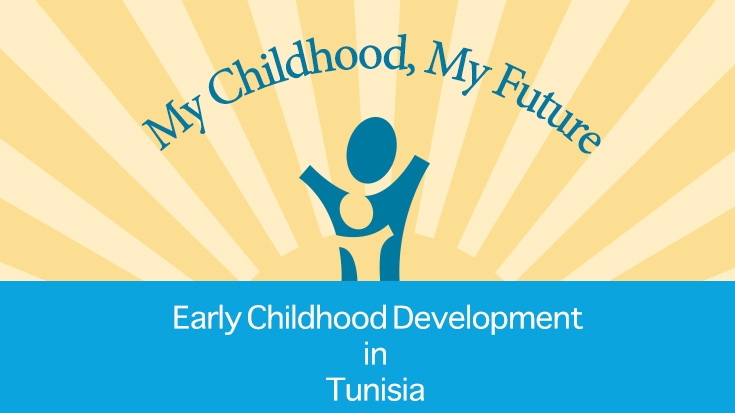The status of Early Childhood Development (ECD) in Tunisia
- Tunisia has achieved near universal prenatal and delivery care, but not all children receive regular prenatal care.
- Early mortality in Tunisia has fallen substantially over time, and is below the regional average.
- While few children are underweight, 10% are stunted.
- Only 45% of children age 3–4 are in Early Childhood Care and Education (ECCE).
- Less than three-quarters of children (71%) experience childhood development activities.
- Violent child discipline is widespread, with 95% of children age 2–5 violently disciplined.
- Almost a quarter (22%) of children age 5 engaged in child labor.
Figure 1. Early childhood development indicators for Tunisia (%)
Source: Authors’ calculations based on Tunisia MICS 2011/12
Children in Tunisia have different opportunities for healthy development based on factors beyond their control.
There are substantial differences in the opportunities children have for healthy development and accumulating human capital. Early childhood is when cycles of poverty and inequality are transmitted across generations. Children tend to be consistently advantaged or disadvantaged across a variety of different dimensions of ECD, and can have very different life chances based on just a few family background characteristics. If we observe a child who lives in a rural area of Sidi Bouzid in Tunisia, in the poorest 20% of households, with uneducated parents (a “least advantaged” child), and compare him to a child with parents with higher education, from the richest 20% of households, in an urban area of Tunis (a “most advantaged” child), we find very different chances of healthy ECD. Figure 2 presents the chances of different ECD indicators for these “least advantaged” and “most advantaged” individuals.
On almost every indicator, the least advantaged child faces poorer prospects for early development. Children face different prospects for surviving their first year of life based on their socio-economic profile. While a most advantaged child has a 1.1% chance of dying in the first month and a 2.2% chance of dying in the first year, a least advantaged child has a 1.6% chance of dying in the first month and a 5.0% chance of dying in the first year. This means a child is twice as likely to die by age 1 based on his or her background. The least advantaged child has a 56% chance of being fully immunized, compared to 91% for the most advantaged child. While the least advantaged child has a 22% chance of being stunted, the most advantaged child has a 7% chance. The greatest differences are in terms of development activities and ECCE. While the least advantaged child has a 5% chance of experiencing childhood development activities, the most advantaged child has a 97% chance. While the least advantaged child has a 4% chance of attending ECCE, the most advantaged child has a 92% chance, more than 20 times greater. The only outcome where the least advantaged child is likely to do better is a lower chance (8%) of child labor than the most advantaged child (19%).
Figure 2. Inequality in the chances for healthy early childhood development (%)
Source: Authors’ simulations of chances for a “most advantaged” and a “least advantaged” child based on calculations using Tunisia MICS 2011/12.


